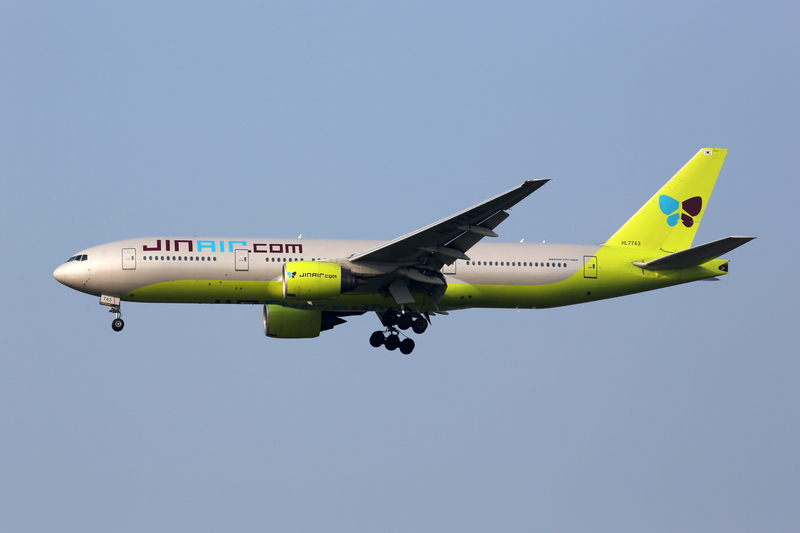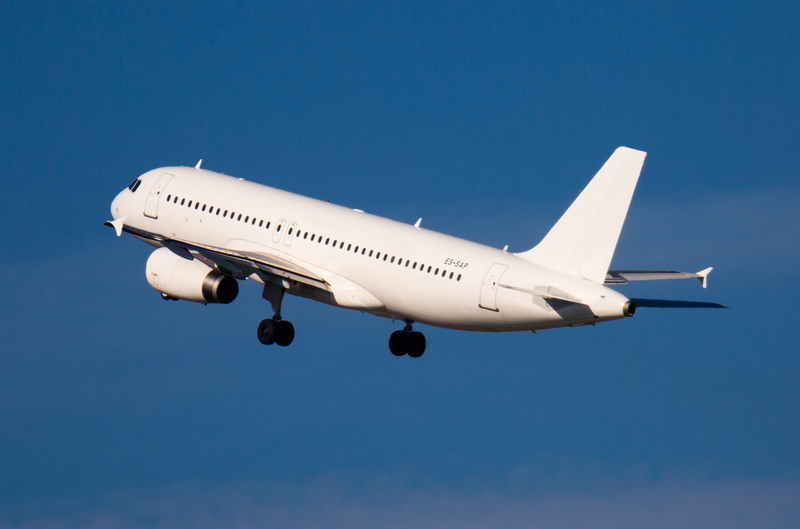10 Daily 777s: The Short Korean Hop That Tops The World
Key Takeaways
-
Seoul Gimpo–Jeju is now the world’s busiest Boeing 777 route, with 10 daily flights in December.
-
The hop is just 243 nautical miles (450 km) – about the same distance as Philadelphia–Boston.
-
310 Boeing 777 departures are scheduled on the route this month, overtaking Tokyo Haneda–Sapporo for the top spot.
-
Korean Air and Jin Air deploy high-density 777s on this incredibly short domestic sector, with widebodies making up about a third of all flights between the two airports.
-
From early 2026, widebody activity drops sharply, and no 777s are currently scheduled on the route beyond this winter season.
Seoul Gimpo–Jeju Is Now The #1 Boeing 777 Route
The short domestic leg between Seoul Gimpo (GMP) and Jeju (CJU) already held the crown as the busiest airport pair in the world when you consider all aircraft types. Now it has added another title:
-
In December, it becomes the world’s top Boeing 777 route, with
-
310 monthly 777 departures
-
Averaging 10 daily flights in each direction
-
That’s enough to push Tokyo Haneda–Sapporo into second place, and even outpaces long-haul heavy hitters like London Heathrow–New York JFK, which sees 257 monthly 777 departures.
All of this is on a route that takes about an hour gate-to-gate and covers just 243 nm (450 km) — roughly the same as flying between Philadelphia and Boston.
A Short Hop With Big Widebodies
The sheer scale of Gimpo–Jeju demand is what makes heavy metal make sense here. Jeju is often dubbed the “Hawaii of Asia”, and for most travelers, flying is the only realistic way to reach the island.
In December:
-
About one in ten flights on Gimpo–Jeju will be operated by a Boeing 777
-
When you include all widebodies (777s plus A330s), twin-aisles operate roughly a third of all flights on the route
On the 777 side specifically:
-
Korean Air uses its non-ER 777-300s with around 338 seats
-
Jin Air flies 777-200ERs in a high-density ~394-seat layout
That level of capacity helps push the average seats per flight on Gimpo–Jeju to about 224. For comparison:
-
JFK–LAX averages around 169 seats per flight
-
Heathrow–JFK sits at roughly 249 seats per flight
This isn’t new for the route, either. Over the past couple of decades, Gimpo–Jeju has seen pretty much every classic widebody you can name:
-
Airbus A300-600
-
Boeing 767-300
-
Even the Boeing 747-400 – which, at times in 2014, operated up to 15 daily departures on this one-hour hop.
A Day In The Life: 10 Daily 777 Flights
On a typical December day (for example, Monday, December 1), Boeing 777s are almost evenly spread across the day in both directions.
From Gimpo to Jeju, you’ll see 777s departing around:
-
06:05 – Jin Air 777-200ER
-
07:35 – Korean Air 777-300
-
09:10 – Jin Air 777-200ER
-
10:20 – Jin Air 777-200ER
-
12:10 – Korean Air 777-300
-
13:40 – Jin Air 777-200ER
-
14:35 – Jin Air 777-200ER
-
16:40 – Korean Air 777-300
-
18:15 – Jin Air 777-200ER
-
20:00 – Jin Air 777-200ER
Back from Jeju to Gimpo, there are another 10 777 rotations:
-
07:00 – Jin Air 777-200ER
-
08:15 – Jin Air 777-200ER
-
09:50 – Korean Air 777-300
-
11:30 – Jin Air 777-200ER
-
12:30 – Jin Air 777-200ER
-
14:25 – Korean Air 777-300
-
16:05 – Jin Air 777-200ER
-
17:20 – Jin Air 777-200ER
-
19:30 – Korean Air 777-300
-
20:25 – Jin Air 777-200ER
It’s a pretty wild sight: a route shorter than many US shuttle flights, absolutely saturated with long-haul widebodies shuttling leisure and local demand.
Widebody Surge Won’t Last Forever
December is a high-water mark for widebody capacity on Gimpo–Jeju:
-
On December 1, there are 37 widebody departures on the route
-
A year earlier, there were just nine in each direction on the same date
-
The recent record was 40 widebody departures, reached on five dates in November 2025
But this is a spike, not a permanent new normal. Current schedules show that from January 1, 2026, widebody flying on the route will be scaled back significantly:
-
19 daily widebody departures through March 28 (the end of the northern winter season)
-
Then down to eight daily departures after that
Most notably, no Boeing 777 flights are currently scheduled on Gimpo–Jeju at all for 2026, at least for now. That could still change if demand and fleet plans evolve, but the massive December surge in 777 activity appears to be a seasonal peak rather than a long-term baseline.
Bottom Line
For December, Seoul Gimpo–Jeju is the world’s busiest Boeing 777 route, with 10 daily widebody flights on a sector that takes roughly an hour. Korean Air and Jin Air are using high-capacity 777s to soak up huge holiday demand on what is already the world’s most-served airport pair overall.
This is a fascinating example of widebodies being deployed on a very short domestic trunk route, but the current level of 777 activity looks temporary. From early 2026, widebody flights on Gimpo–Jeju drop significantly, and as of now, no 777s are planned on the route next year. If you want to log a 777 on a 1-hour Korean island hop, this winter is the time to do it.






